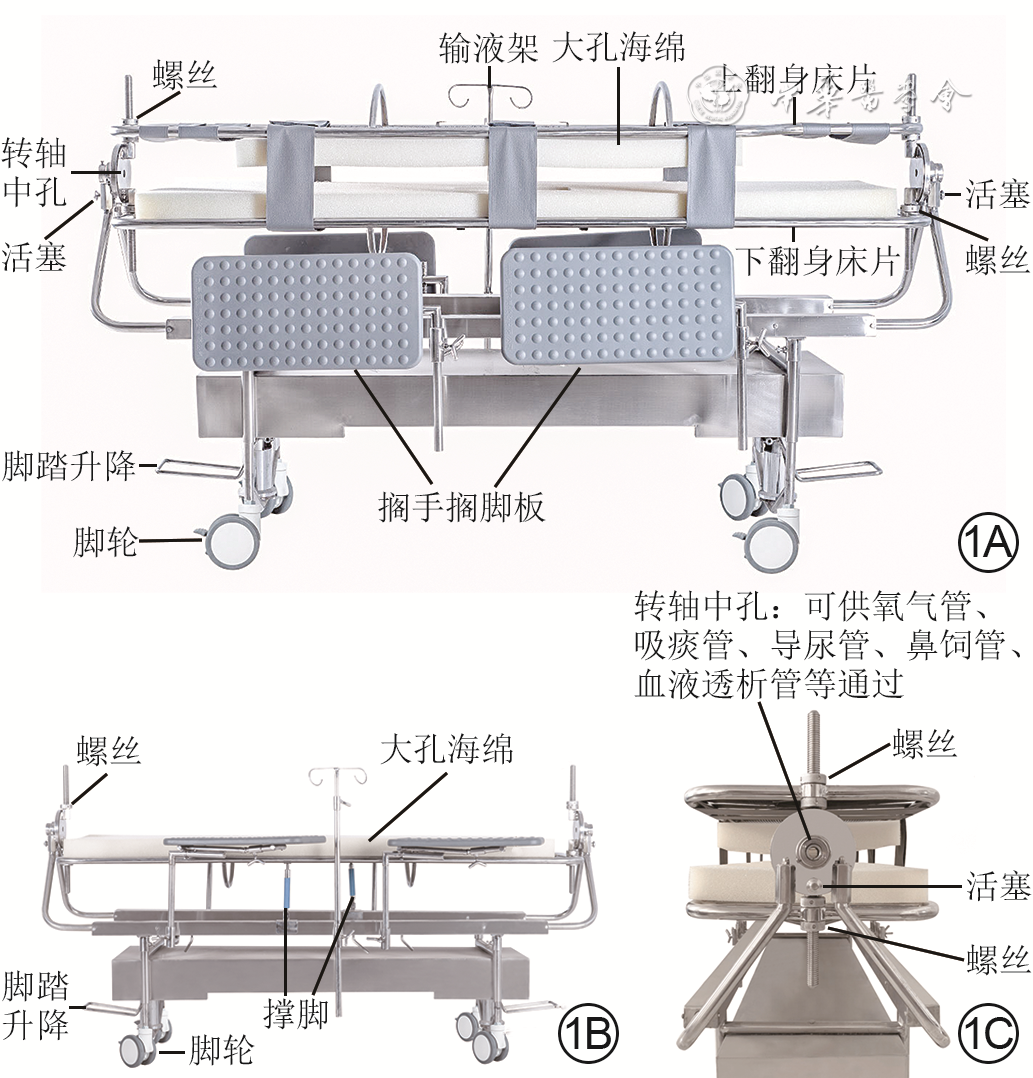National expert consensus on prone position therapy in adult burn patients (2022 version)
-
摘要: 俯卧位通气(PPV)作为机械通气治疗的一部分越来越受重视,相关共识和指南相继出台。俯卧位治疗(PPT)在烧伤临床诊疗中应用较为普遍。与传统意义的PPV相比,烧伤PPT在适应证、流程细节、注意事项等方面存在显著差异。因此,中国老年医学学会烧创伤分会和中华医学会烧伤外科学分会重症学组汇总循证证据,牵头制订了《成人烧伤俯卧位治疗全国专家共识(2022版)》,从PPT作用机制、适应证、使用流程等方面形成推荐意见,以供临床参考。Abstract: Prone position ventilation (PPV) is attracting more and more attention as a part of mechanical ventilation treatment, and relevant consensus and guidelines have been formulated. Prone position therapy (PPT) is widely used in the clinical diagnosis and treatment of burns. Compared with traditional PPV, burn PPT is significantly different in indications, process details, precautions, etc. Therefore, the Burn and Trauma Branch of Chinese Geriatric Society and Critical Care Group of Chinese Burn Association collected the evidence,led the formulation of National expert consensus on prone position therapy in adult burn patients (2022 version), and formulated recommendations on action mechanism, indications, use process of PPT for clinical guidance.
-
Key words:
- Burns /
- Prone position /
- Ventilation /
- Expert consensus
-
参考文献
(35) [1] SweetDG,CarnielliV,GreisenG,et al.European consensus guidelines on the management of respiratory distress syndrome- 2019 update[J].Neonatology,2019,115(4):432-450.DOI: 10.1159/000499361. [2] FanE,Del SorboL,GoligherEC,et al.An official American Thoracic Society/European Society of Intensive Care Medicine/Society of Critical Care Medicine clinical practice guideline: mechanical ventilation in adult patients with acute respiratory distress syndrome[J].Am J Respir Crit Care Med,2017,195(9):1253-1263.DOI: 10.1164/rccm.201703-0548ST. [3] GuérinC,ReignierJ,RichardJC,et al.Prone positioning in severe acute respiratory distress syndrome[J].N Engl J Med,2013,368(23):2159-2168.DOI: 10.1056/NEJMoa1214103. [4] GriffithsM,McAuleyDF,PerkinsGD,et al.Guidelines on the management of acute respiratory distress syndrome[J].BMJ Open Respir Res,2019,6(1):e000420.DOI: 10.1136/bmjresp-2019-000420. [5] AlhazzaniW,MøllerMH,ArabiYM,et al.Surviving Sepsis Campaign: guidelines on the management of critically ill adults with Coronavirus Disease 2019 (COVID-19)[J].Intensive Care Med,2020,46(5):854-887.DOI: 10.1007/s00134-020-06022-5. [6] TacconeP,PesentiA,LatiniR,et al.Prone positioning in patients with moderate and severe acute respiratory distress syndrome: a randomized controlled trial[J].JAMA,2009,302(18):1977-1984.DOI: 10.1001/jama.2009.1614. [7] HaleDF,CannonJW,BatchinskyAI,et al.Prone positioning improves oxygenation in adult burn patients with severe acute respiratory distress syndrome[J].J Trauma Acute Care Surg,2012,72(6):1634-1639.DOI: 10.1097/TA.0b013e318247cd4f. [8] BastonCM,CoeNB,GuerinC,et al.The cost-effectiveness of interventions to increase utilization of prone positioning for severe acute respiratory distress syndrome[J].Crit Care Med,2019,47(3):e198-e205.DOI: 10.1097/CCM.0000000000003617. [9] JozwiakM,TeboulJL,AnguelN,et al.Beneficial hemodynamic effects of prone positioning in patients with acute respiratory distress syndrome[J].Am J Respir Crit Care Med,2013,188(12):1428-1433.DOI: 10.1164/rccm.201303-0593OC. [10] FernandezR,TrenchsX,KlamburgJ,et al.Prone positioning in acute respiratory distress syndrome: a multicenter randomized clinical trial[J].Intensive Care Med,2008,34(8):1487-1491.DOI: 10.1007/s00134-008-1119-3. [11] CharronC,RepesseX,BouferracheK,et al.PaCO2 and alveolar dead space are more relevant than PaO2/FiO2 ratio in monitoring the respiratory response to prone position in ARDS patients: a physiological study[J].Crit Care,2011,15(4):R175.DOI: 10.1186/cc10324. [12] GattinoniL,TognoniG,PesentiA,et al.Effect of prone positioning on the survival of patients with acute respiratory failure[J].N Engl J Med,2001,345(8):568-573.DOI: 10.1056/NEJMoa010043. [13] 董政,潘维诚,刘樾,等.俯卧位通气对爆震伤、烧伤并发ARDS治疗的影响[J].中国现代医药杂志,2010,12(9):17-19.DOI: 10.3969/j.issn.1672-9463.2010.09.007. [14] 曹卫红 俯卧位机械通气对大面积烧伤合并吸入性损伤患者气体交换功能和血液动力学的影响 第八届全国创伤修复(愈合)与组织再生学术交流会论文集 广州 2012 208 曹卫红. 俯卧位机械通气对大面积烧伤合并吸入性损伤患者气体交换功能和血液动力学的影响[C] //中华医学会.第八届全国创伤修复(愈合)与组织再生学术交流会论文集. 广州,2012:208.
[15] LimCM,KimEK,LeeJS,et al.Comparison of the response to the prone position between pulmonary and extrapulmonary acute respiratory distress syndrome[J].Intensive Care Med,2001,27(3):477-485.DOI: 10.1007/s001340000848. [16] OtoB,OroscoRI,PanterE,et al.Prone positioning of the burn patient with acute respiratory distress syndrome: a review of the evidence and practical considerations[J].J Burn Care Res,2018,39(3):471-475.DOI: 10.1097/BCR.0000000000000601. [17] GattinoniL,CarlessoE,TacconeP,et al.Prone positioning improves survival in severe ARDS: a pathophysiologic review and individual patient meta-analysis[J].Minerva Anestesiol,2010,76(6):448-454. [18] GuerinC,GaillardS,LemassonS,et al.Effects of systematic prone positioning in hypoxemic acute respiratory failure: a randomized controlled trial[J].JAMA,2004,292(19):2379-2387.DOI: 10.1001/jama.292.19.2379. [19] MunshiL,Del SorboL,AdhikariNKJ,et al.Prone position for acute respiratory distress syndrome. A systematic review and meta-analysis[J].Ann Am Thorac Soc,2017,14(Suppl 4):S280-288.DOI: 10.1513/AnnalsATS.201704-343OT. [20] ManceboJ,FernándezR,BlanchL,et al.A multicenter trial of prolonged prone ventilation in severe acute respiratory distress syndrome[J].Am J Respir Crit Care Med,2006,173(11):1233-1239.DOI: 10.1164/rccm.200503-353OC. [21] 中华医学会重症医学分会重症呼吸学组.急性呼吸窘迫综合征患者俯卧位通气治疗规范化流程[J].中华内科杂志,2020,59(10):781-787.DOI: 10.3760/cma.j.cn112138-20200430-00439. [22] GattinoniL,BusanaM,GiosaL,et al.Prone positioning in acute respiratory distress syndrome[J].Semin Respir Crit Care Med,2019,40(1):94-100.DOI: 10.1055/s-0039-1685180. [23] SettenM,PlotnikowGA,AccoceM.Prone position in patients with acute respiratory distress syndrome[J].Rev Bras Ter Intensiva,2016,28(4):452-462.DOI: 10.5935/0103-507X.20160066. [24] PapazianL,AubronC,BrochardL,et al.Formal guidelines: management of acute respiratory distress syndrome[J].Ann Intensive Care,2019,9(1):69.DOI: 10.1186/s13613-019-0540-9. [25] GuervillyC, Prud'hommeE, PaulyV, et al. Prone positioning and extracorporeal membrane oxygenation for severe acute respiratory distress syndrome: time for a randomized trial? [J]. Intensive Care Med, 2019, 45(7): 1040-1042. DOI: 10.1007/s00134-019-05570-9. [26] CulbrethRE,GoodfellowLT.Complications of prone positioning during extracorporeal membrane oxygenation for respiratory failure: a systematic review[J].Respir Care,2016,61(2):249-254.DOI: 10.4187/respcare.03882. [27] BloomfieldR,NobleDW,SudlowA.Prone position for acute respiratory failure in adults[J].Cochrane Database Syst Rev,2015,2015(11):CD008095.DOI: 10.1002/14651858.CD008095.pub2. [28] GattinoniL,TacconeP,CarlessoE,et al.Prone position in acute respiratory distress syndrome. Rationale, indications, and limits[J].Am J Respir Crit Care Med,2013,188(11):1286-1293.DOI: 10.1164/rccm.201308-1532CI. [29] LéonetS,FontaineC,MoraineJJ,et al.Prone positioning in acute respiratory failure: survey of Belgian ICU nurses[J].Intensive Care Med,2002,28(5):576-580.DOI: 10.1007/s00134-002-1274-x. [30] McCormickJ,BlackwoodB.Nursing the ARDS patient in the prone position: the experience of qualified ICU nurses[J].Intensive Crit Care Nurs,2001,17(6):331-340.DOI: 10.1054/iccn.2001.1611. [31] LawAC,ForbathN,O'DonoghueS,et al.Hospital-level availability of prone positioning in Massachusetts ICUs[J].Am J Respir Crit Care Med,2020,201(8):1006-1008.DOI: 10.1164/rccm.201910-2097LE. [32] BellJ,HornerD.BET 1: prone positioning of awake patients with acute hypoxaemic respiratory failure[J].Emerg Med J,2020,37(6):379-381.DOI: 10.1136/emermed-2020-209962.2. [33] JiangLG,LeBaronJ,BodnarD,et al.Conscious proning: an introduction of a proning protocol for nonintubated, awake, hypoxic emergency department COVID-19 patients[J].Acad Emerg Med,2020,27(7):566-569.DOI: 10.1111/acem.14035. [34] FistlerC, MitchellD. Christiana care health services interprofessional clinical practice guideline: prone positioning protocol for moderate to severe acute respiratory distress syndrome[M]. Wilmington, DE: Christiana Care Health Services, 2018. [35] FanE, BrodieD, SlutskyAS. Acute respiratory distress syndrome: advances in diagnosis and treatment[J]. JAMA, 2018, 319(7): 698-710. DOI: 10.1001/jama.2017.21907. -
表1 GRADE推荐强度分级与证据级别
推荐强度 证据级别 使用推荐 强推荐(1) 高级别证据(A) 必须使用 中等级别证据(B) 可能应该使用 专家建议 证据不足 本领域相关RCT非常有限 弱推荐(2) 低等级别证据(C) 可能不应该使用 极低级别证据(D) 不能使用 注:GRADE为推荐意见分级的评估、制订及评价,RCT为随机对照试验 -
 成人烧伤俯卧位治疗全国专家共识(2022版).docx
成人烧伤俯卧位治疗全国专家共识(2022版).docx

-








 下载:
下载:





